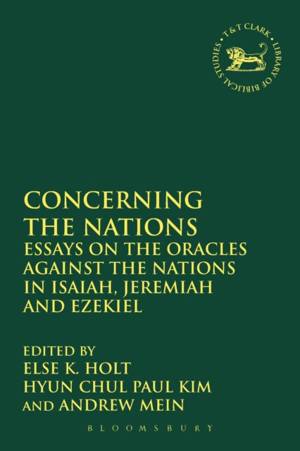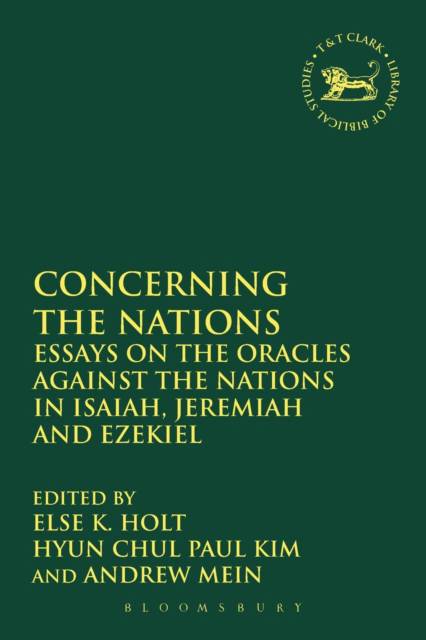
- Afhalen na 1 uur in een winkel met voorraad
- Gratis thuislevering in België vanaf € 30
- Ruim aanbod met 7 miljoen producten
- Afhalen na 1 uur in een winkel met voorraad
- Gratis thuislevering in België vanaf € 30
- Ruim aanbod met 7 miljoen producten
Zoeken
Concerning the Nations
Essays on the Oracles Against the Nations in Isaiah, Jeremiah and Ezekiel
Andrew Mein
€ 88,45
+ 176 punten
Omschrijving
Isaiah, Jeremiah, and Ezekiel share much in common. They address the pivotal times and topics associated with the last stages of the monarchical history of Israel, and with the development of new forms of communal and religious life through exile and beyond. One important structural component of all three books is a substantial section which concerns itself with a range of foreign nations, commonly called the "Oracles against the Nations+?, which form the focus of this book.
These chapters together present the most up-to-date scholarship on the oracles - an oft-neglected but significant area in the study of the prophetic literature. The particular characteristics of Isaiah, Jeremiah (both Masoretic Text and Septuagint versions), and Ezekiel, are discussed showcasing the unique issues pertinent to each book and the diverse methods used to address them. These evident differences aside, the Oracles Against the Nations are employed as a springboard in order to begin the work of tracing similarities between the texts. By focusing on these unique yet common sections, a range of interrelated themes and issues of both content and method become noticeable: for example, though not exhaustively, pattern, structure, language, comparative history, archaeology, sociology, politics, literature, imagery, theme, theology, and hermeneutical issues related to today's context. As a result this collection presents a range of cutting-edge approaches on these key prophetic books, and will provide a basis for further comparative study and reflection.
These chapters together present the most up-to-date scholarship on the oracles - an oft-neglected but significant area in the study of the prophetic literature. The particular characteristics of Isaiah, Jeremiah (both Masoretic Text and Septuagint versions), and Ezekiel, are discussed showcasing the unique issues pertinent to each book and the diverse methods used to address them. These evident differences aside, the Oracles Against the Nations are employed as a springboard in order to begin the work of tracing similarities between the texts. By focusing on these unique yet common sections, a range of interrelated themes and issues of both content and method become noticeable: for example, though not exhaustively, pattern, structure, language, comparative history, archaeology, sociology, politics, literature, imagery, theme, theology, and hermeneutical issues related to today's context. As a result this collection presents a range of cutting-edge approaches on these key prophetic books, and will provide a basis for further comparative study and reflection.
Specificaties
Betrokkenen
- Auteur(s):
- Uitgeverij:
Inhoud
- Aantal bladzijden:
- 304
- Taal:
- Engels
- Reeks:
- Reeksnummer:
- nr. 612
Eigenschappen
- Productcode (EAN):
- 9780567669186
- Verschijningsdatum:
- 19/05/2016
- Uitvoering:
- Paperback
- Formaat:
- Trade paperback (VS)
- Afmetingen:
- 156 mm x 234 mm
- Gewicht:
- 426 g

Alleen bij Standaard Boekhandel
+ 176 punten op je klantenkaart van Standaard Boekhandel
Beoordelingen
We publiceren alleen reviews die voldoen aan de voorwaarden voor reviews. Bekijk onze voorwaarden voor reviews.








